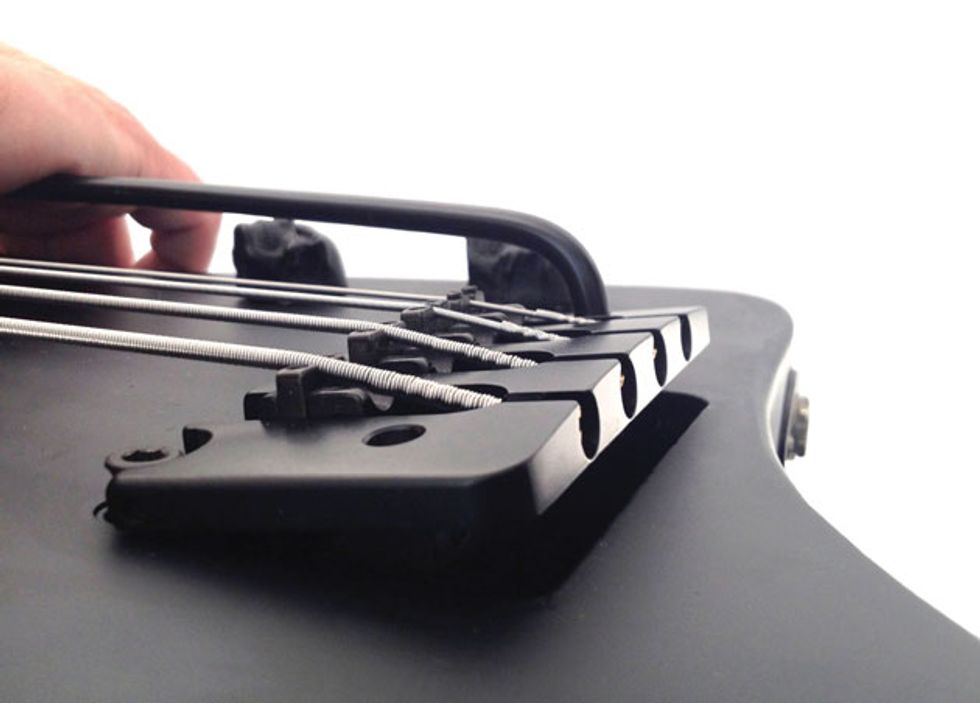Some call it a tremolo, others a vibrato. Only one term is correct, but no harm done—as long as you don’t base an entire concept on a faulty foundation. Photo courtesy of hipshotproducts.com
Making music is typically a collaborative experience—particularly for bass players because most of us play in a band context—and this collaboration depends on communication. In addition to learning how to physically master the fretboard, playing an instrument is also about learning to properly interact with the rest of the band, the sound guy, your repair tech, and even your stage crew (if you are lucky enough to have one). The vocabulary required to address “the whole musical experience” is a mix of music theory, names for mechanical parts of your instrument and other gear, electrical and electronic specs, and expressions for describing notes in terms of physical acoustics. This wild combination of terminology is what makes the adventure simultaneously interesting and confusing.
The confusion often originates from using improper language. It’s no big deal whether you call a whammy a tremolo or vibrato unit. One of them is wrong, but thanks to Leo Fender we all got used to it and it doesn’t do any harm.
“Powerful pickups” is another example of improper terminology getting used in a technical setting. Try driving a light bulb with a pickup and you won’t see much of said power. On our instruments, the power lies in the sinusoidal alternation of kinetic and potential energy in the string. The pickup is just the transducer, changing this energy into its electric form. The common question “how does this pickup sound?” creates a similar situation. We all know what’s meant by it, but that’s definitely not what was actually said.
Here’s an example of how several guitar-term dictionaries define sustain: “The length of time that a note sounds for after it is plucked.” That appears okay to most musicians. But when that definition drove members of a forum to go nuts measuring the sustain of their basses, everyone came up with results in a range of several minutes. Had it been properly written, that definition would have read “a note still sounds at a certain volume after it is plucked.” (And the forum thread should have discussed how hard to pluck and how to measure volume.) The members’ results would have been very different.
While the above examples are simply fun and represent only a small collection of improper or incomplete naming, things can get misleading or painfully wrong when one starts to build on questionable statements.
One example of this is how a wrong understanding of the very basic term “tension” can lead you to believe you can increase it by elongating a string outside its scale length. In short: you can’t! (For the gory details, check out “The B-String Extender Myth” on premierguitar.com.)
Ever noticed how often (and how differently) the term “resonance” is used in the context of instruments? Statements like these are common: “If you can feel vibrations through the body and/or neck, that is resonance and it’s good.” “This tonewood will make a superior guitar because it resonates so well.” The physical understanding of resonance is very clear, but transferring that knowledge to more complex systems isn’t so straightforward. It’s a key area in physical acoustics and, therefore, worth examining in another column.
Because of the widely positive image of resonance, some designers try to make clever use of it—or at least pursue what they think is clever. One such example is the so-called “Internal Resonance System” that uses tuning forks machined into the core of a chambered body to “re-circulate the vibrations back into the strings, greatly increasing the resonance quality and note sustaining ability.” And yes, it’s patented, which, of course, says nothing about whether it works or not. Can you imagine what happens when a tuning fork tuned to A reacts to an A on the fretboard?
A second example comes from the R&D team that already tried to fool around with the term “tension” in our B-string myth. Called A.I.R. (Alternative Internal Resonance), this system uses “resonant softwood embedded between harder tonewoods with a series of aluminum tubes passing through the core from the bridge to allow the string vibrations to achieve clear passage through the body mass.” Safe travels, dear vibrations! Next month we’ll find out what you actually did down there.








![Rig Rundown: AFI [2025]](https://www.premierguitar.com/media-library/youtube.jpg?id=62064741&width=1245&height=700&quality=70&coordinates=0%2C0%2C0%2C0)












 Shop Scott's Rig
Shop Scott's Rig















































